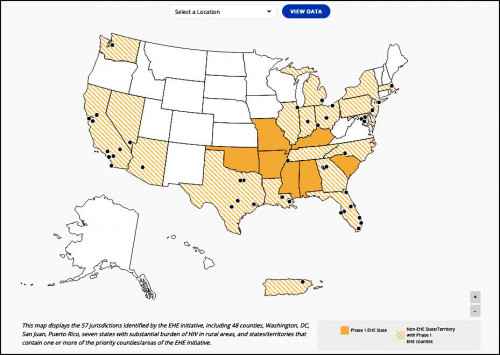Butler County, Ohio, experienced a 700% jump in HIV cases since January 1, compared with the same time period last year, reports WCPO 9 News. The new HIV diagnoses are linked to injection drug use.
“While this represents just eight new cases, the percent increase is alarming and something we need to understand so we can implement prevention tactics,” Jackie Phillips Carter, the health commissioner for Middletown, one of the main cities in Butler County, said in a statement.
Watch the WCPO 9 News report below:
A 700% spike in cases since the beginning of this year would mean that the county saw one new HIV case during the same time in 2020. In all of last year, the county recorded 12 HIV diagnoses.
“This gives us an opportunity to educate how HIV is transmitted,” Phillips Carter told the ABC affiliate, noting that although COVID-19 has garnered much of the public health headlines the past year, the county still struggles with addiction and other issues that can increase the risk of contracting HIV.
The news of the HIV cases, she added, affords the community and health advocates a chance to focus on the holistic needs of those testing positive and to ultimately get people in treatment.
HIV testing is increasingly available to people experiencing homelessness in Middletown, WCPO reports. The local jail will also be offering testing.
Free testing 1300 Reynolds ave every Tuesday from 10 am to 1pm
Posted by The Exchange Project on Thursday, April 29, 2021
Another important resource for the area is the nonprofit harm reduction group The Exchange Project, which operates a syringe exchange and provides HIV testing.
Butler County has a population of 368,130 and is located in the southwest corner of Ohio, across from Indiana and just north of Cincinnati and Kentucky. The county seat is Hamilton.

Istock
Surges of HIV and hepatitis C cases have been reported in southern Ohio and northern Kentucky the past three years. (The hepatitis C virus, which attacks the liver and can lead to liver cancer and death, is also transmitted through injection drug use.) In fact, three counties in Ohio—Cuyahoga, Hamilton and Franklin—were included in a federal list of counties targeted to receive federal funding as part of the federal initiative “Ending the HIV Epidemic: A Plan for America”
Launched in 2019, the 10-year plan aims to lower new HIV rates by 75% by 2025 and by 90% by 2030. This would amount to fewer than 3,000 HIV cases a year. “Reducing new infections to this level,” according to the initiative, “would essentially mean that HIV transmissions would be rare and meet the definition of ending the epidemic.”
Reaching these benchmarks involves investing federal funding and resources in 57 key jurisdictions. This translates to the 48 counties plus Washington, DC, and San Juan, Puerto Rico, that together account for 50% of new HIV cases, plus seven rural states with high HIV burdens: Alabama, Arkansas, Kentucky, Mississippi, Missouri, Oklahoma and South Carolina.

A screenshot of America’s HIV Epidemic Analysis Dashboard (AHEAD)Courtesy of HIV.gov
How’s your state doing in the nation’s plan to end HIV? Find out with the interactive AHEAD dashboard. To learn more about “Ending the HIV Epidemic,” read an overview at HIV.gov and visit the official webpage at HRSA.org. For a related POZ article, see “Plans to End the HIV Epidemic at Home and Abroad.”
HIV is transmitted through the following body fluids:
- Blood
- Semen
- Pre-cum
- Rectal fluids
- Vaginal fluids
- Breast milk.
Transmission can occur through several ways, including condomless sex, sharing needles and injection equipment, and from mother to child during pregnancy. To learn more, see the POZ HIV Basics section on HIV Transmission and Risk.







Comments
Comments